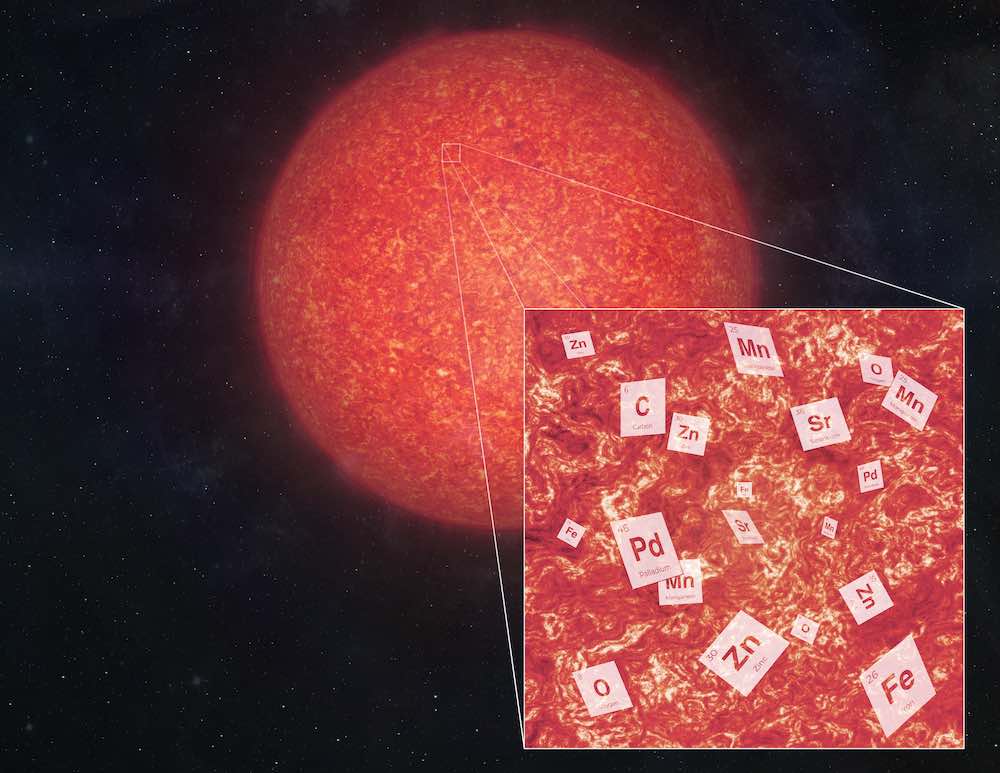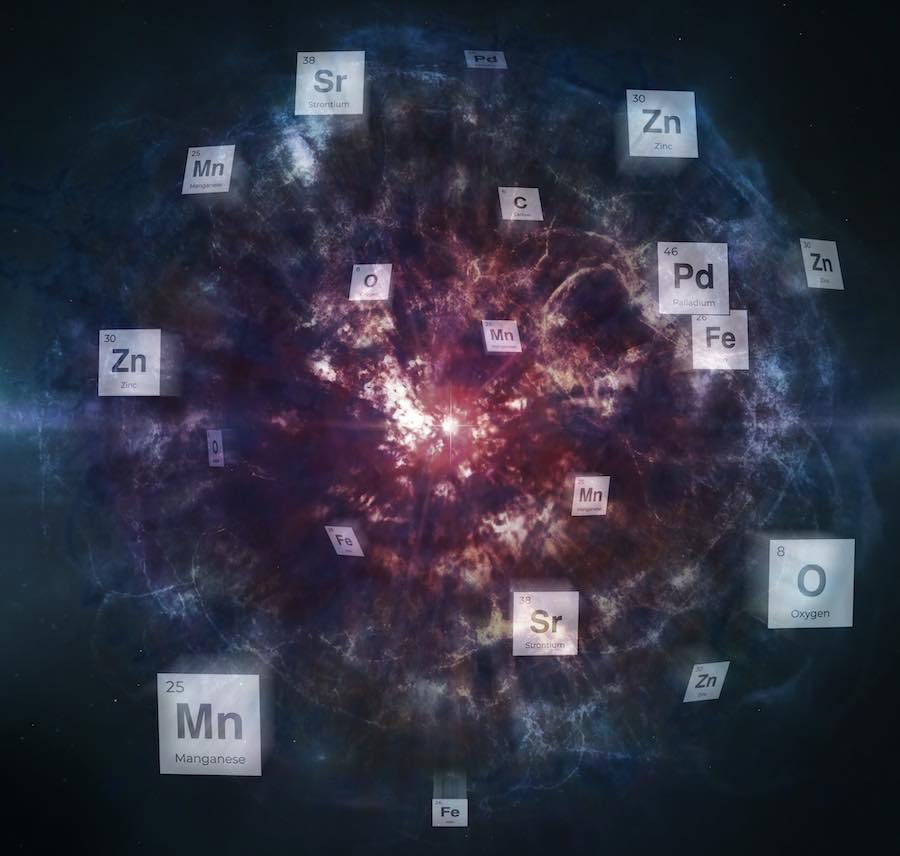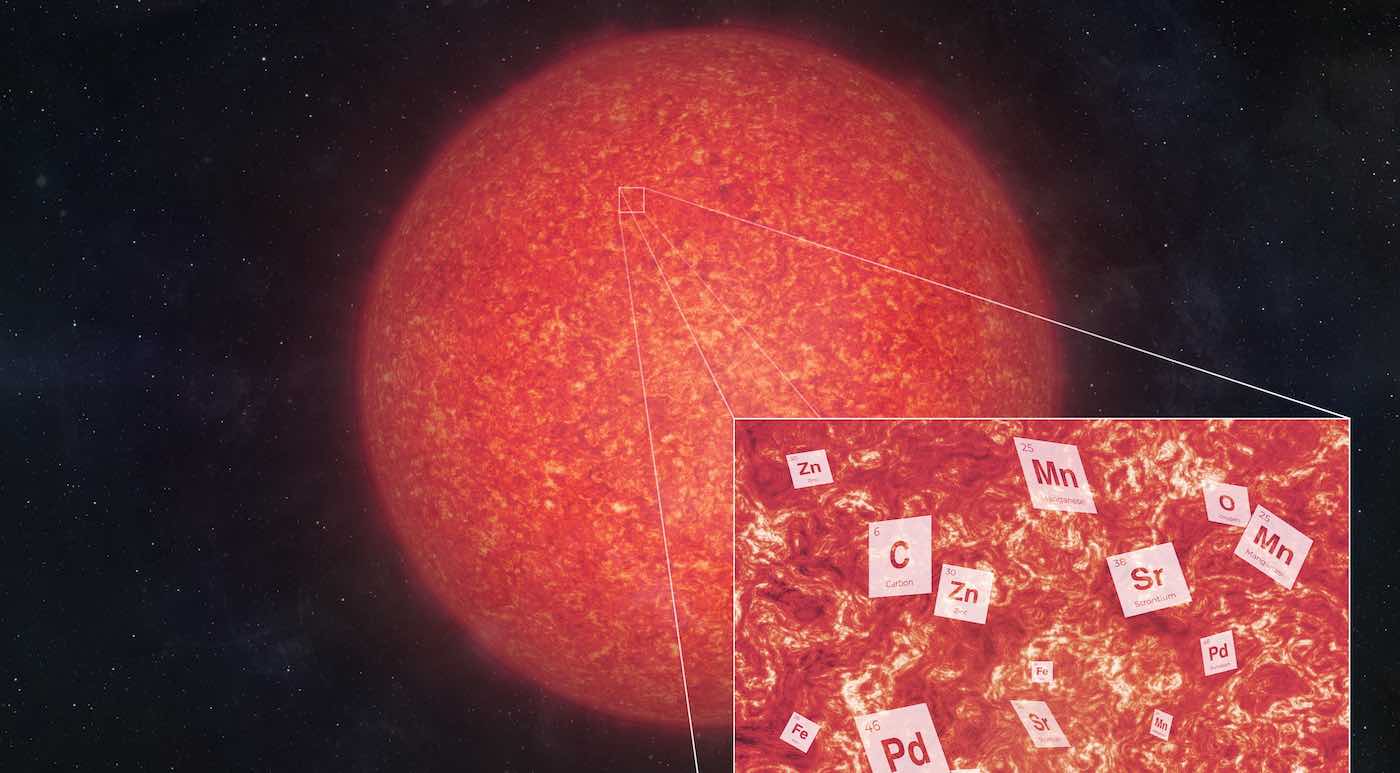
Astronomers have discovered an enormous celestial entity so unusual they named it ‘the Barbenheimer Star’ – a moniker referring to the recent cultural phenomenon of two blockbuster movies, Barbie and Oppenheimer, which were so opposite, yet so successful at the same moment (‘Barbenheimer’).
The team from the Sloan Digital Sky Survey (SDSS) uncovered evidence of a ‘blockbuster’ ancient star that exploded in a way previously thought impossible.
The explosion resulted in an unusual pattern of elemental ashes that left behind a trail of evidence still visible billions of years later.
“We’ve never seen anything like this,” said the lead author of the study, Alex Ji of the University of Chicago and SDSS. “Whatever happened back then, it must have been amazing.”
Ji and colleagues followed the trail back in time using a process called ‘stellar archaeology.’
Just as archaeologists use evidence found in the present to reconstruct the past, astronomers use evidence found in today’s stars to reconstruct conditions in the ancient universe. Today’s stars are like chemical time capsules: they preserve what a piece of the universe was like when the star was born.
The star (scientific name J0931+0038) was captured in an image by the SDSS Milky Way Mapper program, which observes a star’s spectrum, its temperature, and chemical composition—and it was chemistry that first led Ji and his team of stellar archaeologists to notice it.
CHECK OUT: Ringed Planet That Defies Known Physics Discovered in Outer Reaches of Our Solar System
Stars are mostly made of hydrogen and helium, but they also incorporate some of the heavier elements, which were created in previous generations of stars and released into the universe in supernova explosions.

J0931+0038 had an unusually low amount of magnesium, prompting further followup from the Magellan telescopes in Chile. When Ji and colleagues first viewed the followup spectrum of J0931+0038, they were amazed.
“As soon as I saw the spectrum, I immediately emailed the rest of the team to talk about how to learn more,” said Ji, who eventually nicknamed it the ‘Barbenheimer Star’ for its “spectacular nucleosynthesis”.
Several things made the star different from other stars: low abundances of elements with odd numbers on the periodic table like sodium and aluminum; a large amount of elements close to iron in the periodic table like nickel and zinc; and an overabundance of heavier elements like strontium and palladium.
“We sometimes see one of these features at a time, but we’ve never before seen all of them in the same star,” says Jennifer Johnson of the Ohio State University, another member of the stellar archaeology team.
What makes it a blockbuster?
So what made J0931+0038 look the way it looks? The star formed from the supernova remnant of whatever star was there before – and so its unusual composition means that the star that was there before must have also been highly unusual. It is that ancient, weird star whose remains we see preserved today.
WOW: NASA Captures The Sun in a Big Smiley Face Made of Wind (LOOK)
Whatever the Barbenheimer Star was, it must have been a blockbuster—at least 50 to 80 times the mass of our Sun. In fact, that ancient supernova must have been so massive that astronomers are surprised it could happen at all.
Previous theories predicted that such big stars should collapse straight into black holes, without creating a supernova first. As surprising as it is to learn that such a massive star could go supernova, even that doesn’t explain the full picture.
“Amazingly, no existing model of element formation can explain what we see,” says Sanjana Curtis of the University of California, Berkeley, co-lead of the published study. “It’s not just, ‘oh, you can tweak something here and there and it’ll work out – the whole pattern of elements seems almost self-contradictory.”
WANT MORE? Astronomers Detect Radio Pattern ‘Like a Heartbeat’ From a Galaxy Far Away
To resolve the apparent contradiction, the astronomers need more and better computer simulations to make predictions about what happened with stars in the early Universe. And they need more observations of today’s stars to provide evidence for the simulations. Considering that the SDSS team discovered evidence for the Barbenheimer Star the very first night they followed up their initial observations, we can expect many more blockbuster results in the coming years.
“The Universe directed this movie, we are just the camera crew,” says Keith Hawkins of the University of Texas at Austin and SDSS spokesperson. “We don’t yet know how the story will end.”
BLOW Some Minds By Sharing The Discovery on Social Media…




















